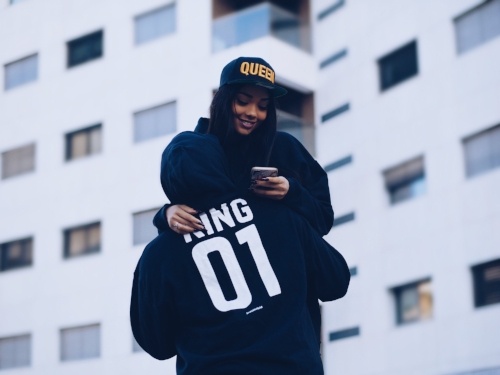The Anatomy of an Influencer-Brand Relationship
As there are no hard and fast rules when it comes to working with influencers, every brand has to carefully decide how they want to approach influencer marketing.
You don’t need to be a marketing expert to know that the human relationship with products and advertising has gotten… complicated. We’re at peak product saturation—and traditional marketing doesn’t have the same effect it used to.

In the US, we spend nearly 5 hours a day on our mobile devices. Instead of watching a classic actor promoting a product on TV, or hearing a singer on the radio, consumers now look towards a more relatable person for advice on what to buy. These people don’t necessarily have the household name recognition that Brad Pitt might have, but they’ve got our attention. They’re known as…
Influencers.
The current customer market craves authenticity from brands, a feeling influencers can tap into more effectively than a celebrity whose life can feel too far away from the average shopper’s. This craving for realness might explain why influencer marketing has a return on investment that is eleven times higher than traditional marketing. But, this new means of advertising is not without its learning curve, and brands need to carefully decide how they want to approach influencer marketing before delving into this world.
How to Work with Influencers
There are no hard and fast rules when it comes to working with influencers, so every brand has to decide for itself how to manage these relationships. Typically, here are the roles involved in this relationship:
Agents. When connecting with influencers, brands may have to work through their agents. Agents are typically responsible for coaching their clients on the industry and how to work with brands, education that’s necessary for a relatively new area.
Influencers. Influencers generally come in two sizes, regular or micro. There are benefits to both. Micro influencers, typically under 1000 followers, receive comments about 0.5% of the time compared to 0.04% for those with 10 million or more. Per follower, that translates to nearly 13x more comments for those with a smaller following.
While smaller influencers may have more impact on their followers, many of whom are their actual friends and acquaintances, they have less of a reach. Markerly, the source of the survey, says that the sweet spot hits at Instagramers with followers between 10k –100k. This point brings the best of both worlds, a high engagement accompanied by a wide reach.
Creative. While working with influencers, there is the question of how much creative control to relinquish. Some brands enlist the influencer to make the creative, others create content for the influencer to post, essentially using them as a means to reach different people.
Account management. Agencies now also hire influencer managers (known online as “influencer wranglers” — here’s what Fashion Week is like for them) to work with agents or influencers directly. They also closely work with agencies, or publishers, to coordinate projects and decide which fit best with which influencers.
Watch for the Influencer’s Narrative
If you’re selling luxury coats, you wouldn’t want your influencer to be a notorious bargain-hunter. Your product must be consistent with the influencer.
As David Richeson explains in Adweek, the best placement takes place in a relatable situation, and feels natural. The power of influencers lies in this ability to break barriers and reach people on a personal level that traditional means of advertising struggle with.
Watch for your Narrative, Too
You’ve worked out the messaging, creative, and time of post with an influencer. Great! But that doesn’t mean you control what any individual chooses to say or post with the rest of their time. Working with an influencer whose politics or social style don’t align with the ethos of your brand is a quick way to alienate your customer base. Do your research.
Dealing with peak product saturation requires a more direct way of building trust with people. Even if Instagram is replaced by another popular app, influencers, in some shape and form, will remain. People will continue to trust people they can connect with, quasi-celebrities who feel closer to real life than those seen in movies.
Read more about how influencers worked with brands through Wattpad by checking out our case study with Unilever’s Eskinol.
Interested in learning more about Wattpad Brand Partnerships? Contact us at brandpartnerships@wattpad.com.